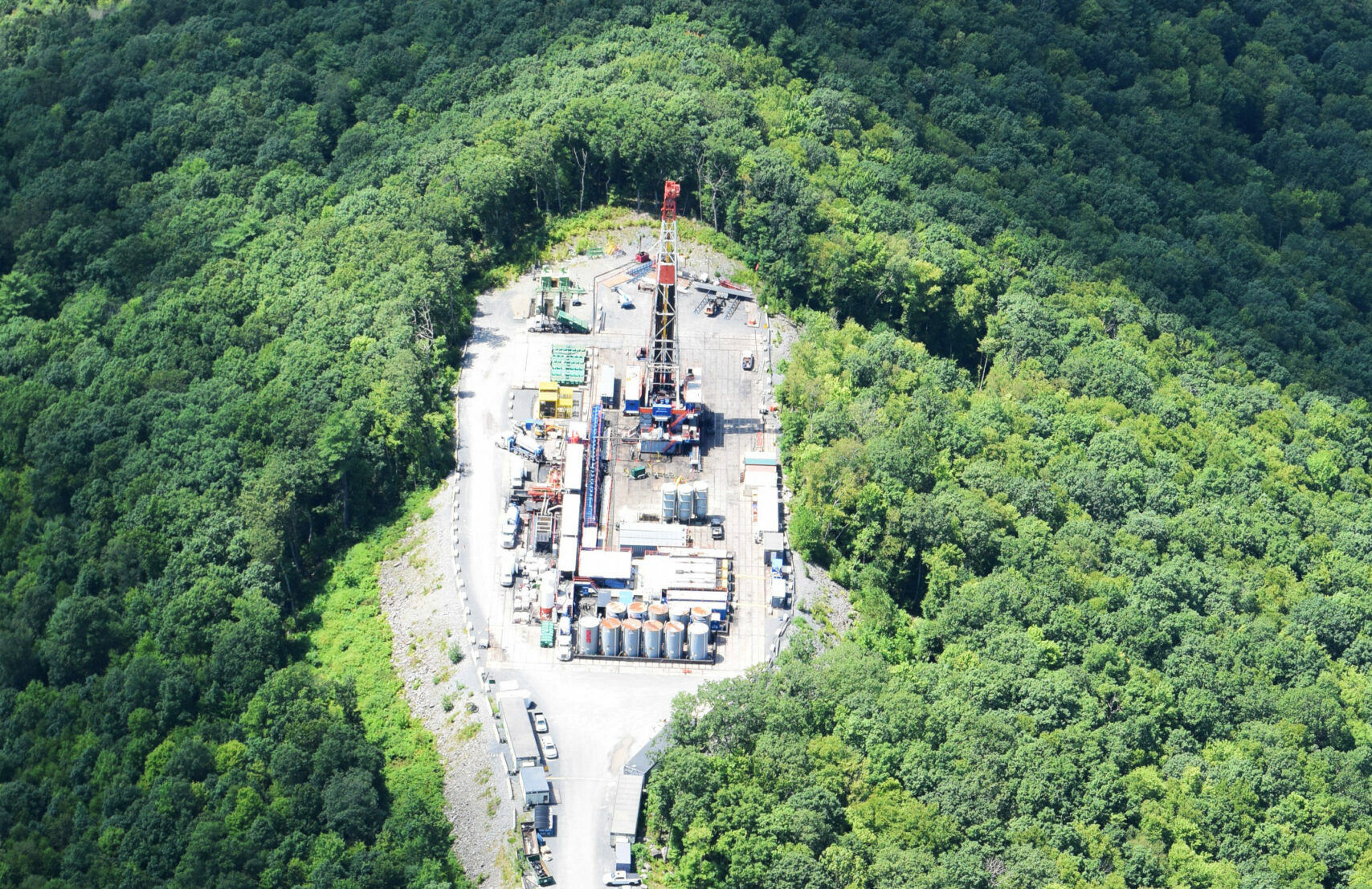Click to view and download Download summary Download digital toolkit
Between 2008 and 2019, the twenty-two counties in Ohio, Pennsylvania, and West Virginia that produce 90% of Appalachian natural gas badly trailed the nation in key measures of economic prosperity, including growth in jobs, personal income, and population. That’s despite the fact that, during this period, economic output grew at a rate three times faster than that of the nation.
The immense growth in gross domestic product (GDP) in the twenty-two counties we’ll call “Frackalachia” was driven by a natural gas production boom, which caused the mining, quarrying, and oil and gas sector to grow from 4% of Frackalachia’s economy in 2008 to 35% in 2019.
But, for the counties of Frackalachia, the boom, which reshaped the region’s landscape as well pads, pipelines, processing facilities and other gas-related infrastructure proliferated, turned out to be an economic bust that imposed significant burdens on people and communities while giving back little in return.
As the prevalence of the Mining sector increased and output as measured by gross domestic product (GDP) skyrocketed, jobs in Frackalachia increased by just 1.6%—more than eight percentage points below the national average. Personal income growth was a third below the national average, and Frackalachia lost over 37,000 people even as the nation’s population was growing by nearly 8%.
The question is, why did this disconnect between economic growth and key measures of prosperity happen? Can the problems that prevented job and income growth in Frackalachia be fixed, or at least mitigated? And what can the Frackalachian counties and the rest of us learn from the experience to help us come up with better economic development strategies? This reports attempts to answer these questions.
- Very few of the billions of dollars ostensibly invested in Frackalachia and little of the revenue generated by the resulting sales of the natural gas actually entered local economies. This is demonstrated not just by the failure of personal income to grow at a level commensurate with output growth, but also in analyses of compensation and wage data, which show that, while the Mining, quarrying, and oil and gas extraction sector comprised 35% of Frackalachia’s GDP in 2019, it provided less than 10% of the compensation received by workers.
- Growth in the mining, quarrying, and oil and gas extraction sector has little effect on other sectors of Frackalachia’s economy. The bulk of the job creation predicted by industry-sponsored economic impact studies was expected to come from indirect and induced employment in other economic sectors. However, after controlling for the immense GDP growth in the mining sector, the rest of the Frackalachian economy grew by just 17% between 2008 and 2019, two percentage points less than the U.S. economy, although slightly better than the economies of Ohio, Pennsylvania, and West Virginia. So, while the fracking boom sent some ripples through the region’s economy, those ripples were small and not sufficient to overcome chronically anemic growth rates in Appalachia and the eastern industrial states of Ohio and Pennsylvania.
- The factors that depressed job and income multipliers in Frackalachia are largely structural and not easily altered. Because the natural gas industry is highly capital-intensive and not very labor-intensive, relatively few jobs are created for each dollar invested and earned. Also, with large numbers of trained workers and service providers able to remotely serve the Marcellus and Utica gas plays from outside the region, the demand for indigenous resources is not high. Finally, natural gas prices sank to a lower point and remained lower than most observers expected at the beginning of the decade. Consequently, royalties and other revenues earned by property owners are less than anticipated.
- While these problems can’t be solved, they can be mitigated in ways that could improve the natural gas industry’s economic contribution to the region. States and, to some degree, local governments can take steps to (a) retain more natural gas investment and revenue in their local economies and (b) minimize the negative impacts, including air, soil, water, and noise pollution, that fracking imposes. These steps could include severance taxes and impact fees as well as added regulation of well drilling and operations.
- The key economic development lesson to take away from the Frackalachian experience is that the region needs to invest in economic development strategies that succeed in the areas where natural gas-based development failed. Such strategies would focus on development of industries that are labor-intensive rather than capital-intensive, they would leverage the existing business community and institutions, and the industries that are developed would provide annuity benefits in the form of savings and improved quality of life that would serve to compound economic impacts and contribute to an improved atmosphere that is more attractive to prospective businesses and families.

